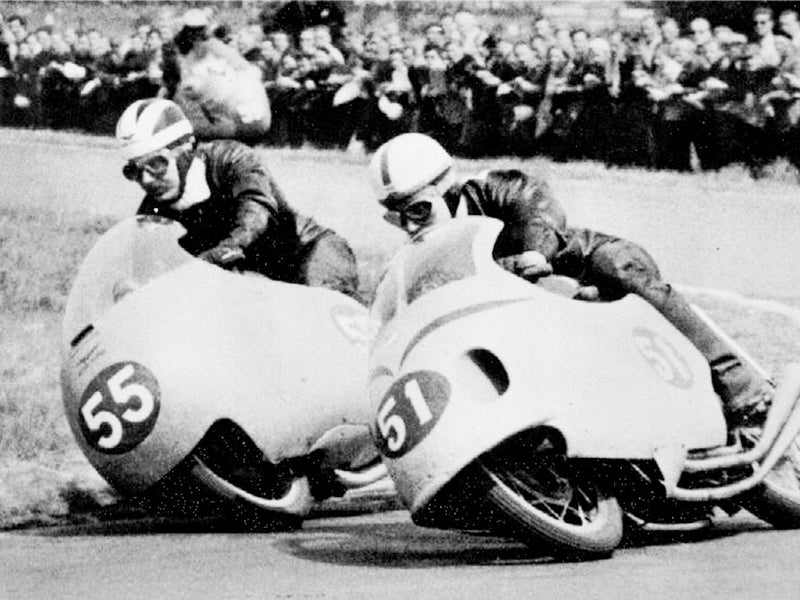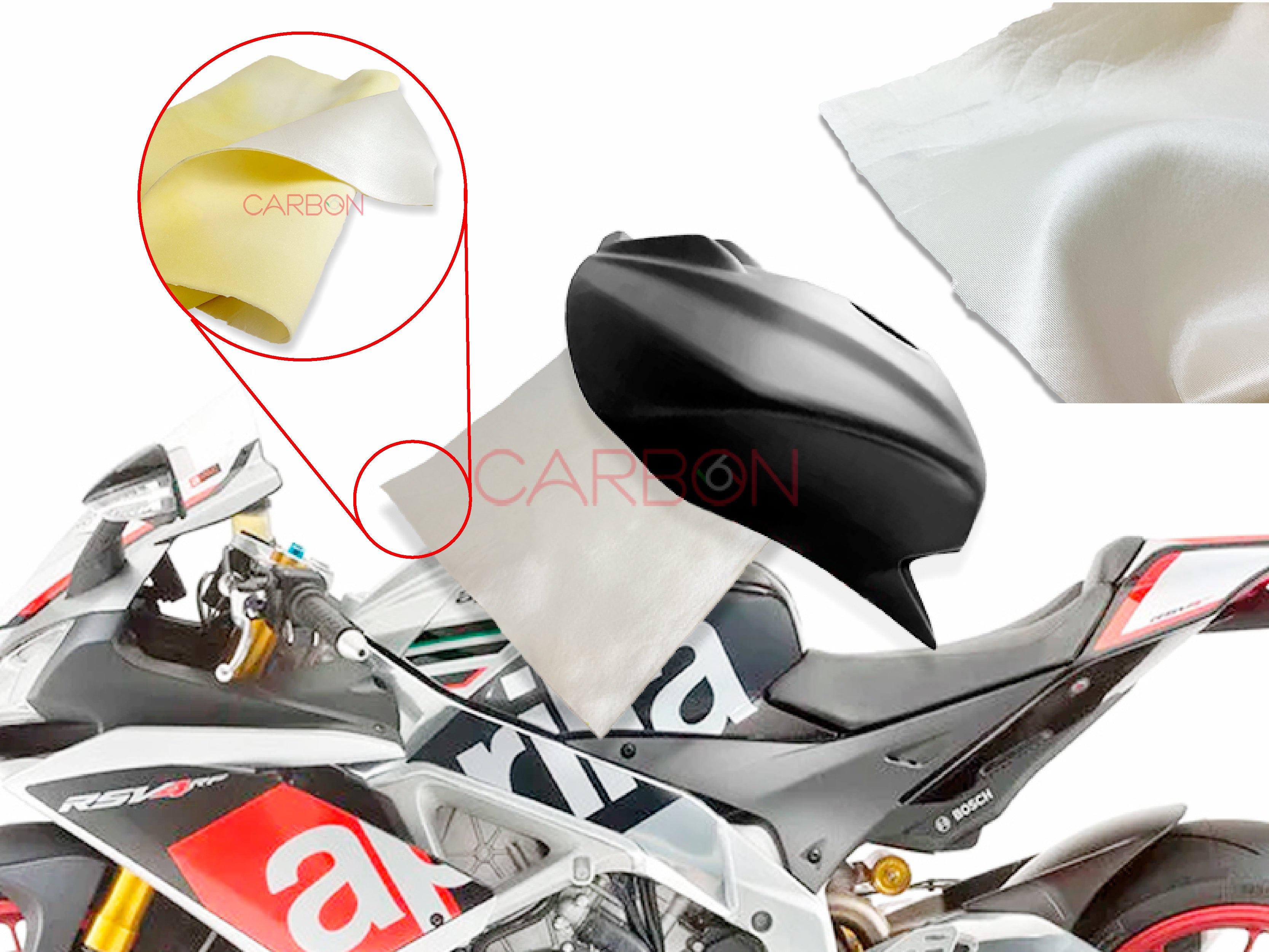The path of track motorcycles over the decades has marked an impressive evolution, moving from robust and rudimentary vehicles to technologically advanced and increasingly faster machines. This transformation has seen the emergence of innovative solutions, significantly influencing performance and safety. We explore this evolution through time, highlighting the role of lightweight fairings in shaping the course of racing.
The First Phases: 1950s - 1960s
In the early decades, track bikes were based on essentially simple design and construction. Brands like MV Agusta, Norton and Ducati dominated competition, offering models like the MV Agusta 500 Tre, Norton Manx and Ducati 750SS. These bikes featured tubular frames and four-stroke engines, with an emphasis primarily on reliability and power.
The "Two-Stroke" Motorcycle Era: 1970s - 1980s
The 70s and 80s saw the advent of two-stroke motorcycles, introduced by manufacturers such as Yamaha, Suzuki and Kawasaki. Iconic models such as the Yamaha TZ750 and the Suzuki RG500 have redefined the concept of power and agility, presenting high compression engines and lighter final structures, all essentially due to the mechanical simplicity of these engines, fewer mechanical parts, smaller overall dimensions of space and less weight. It was also a period that saw the introduction of aluminum and steel frames, further reducing the overall weight of the bikes.
Technological Revolution: 90s - 2000s
The 1990s brought a technological breakthrough in motorcycle racing. Brands such as Honda, Ducati and Yamaha introduced advanced suspension and braking systems, while electronics made great strides with the advent of the first traction control systems and ABS. Models such as the Honda RC30, Ducati 916 and Yamaha YZF-R1 embodied high performance, cutting-edge electronics and innovative design.
The Modern Age: 2000s - Today
The new millennium has brought an explosion of technology to track racing. Brands such as Kawasaki with the Ninja ZX-10R, BMW with the S1000RR and Aprilia with the RSV4 have introduced even more sophisticated electronic control systems, giving riders unprecedented control over the bikes. Composite materials such as reinforced fiberglass have become increasingly popular, reducing weight and providing greater strength.
Conclusions
The evolution of track motorcycles over the years has been characterized by a constant commitment to lightness, performance and electronics.
The use of lightweight materials in the fairings has played a fundamental role in making the motorcycles more agile and high-performance, without compromising structural resistance. Through the various eras, brands such as Honda, Yamaha, Ducati and many others have continued to innovate, bringing more and more lightness and improvements to competitions. This incessant search for technological excellence projects the future of racing motorcycles towards new horizons, with constant progress in the search for increasingly lighter and higher-performance solutions.
We are undoubtedly experiencing, in our times, the fastest, most powerful and cutting-edge motorcycles ever, but how far will we go? Can we still do better?
And you, what do you think? Leave a comment below ;)
If you have other questions or specific requests on certain models or materials, we will be happy to help you and investigate further, do not hesitate to contact us!
The First Phases: 1950s - 1960s
In the early decades, track bikes were based on essentially simple design and construction. Brands like MV Agusta, Norton and Ducati dominated competition, offering models like the MV Agusta 500 Tre, Norton Manx and Ducati 750SS. These bikes featured tubular frames and four-stroke engines, with an emphasis primarily on reliability and power.
The "Two-Stroke" Motorcycle Era: 1970s - 1980s
The 70s and 80s saw the advent of two-stroke motorcycles, introduced by manufacturers such as Yamaha, Suzuki and Kawasaki. Iconic models such as the Yamaha TZ750 and the Suzuki RG500 have redefined the concept of power and agility, presenting high compression engines and lighter final structures, all essentially due to the mechanical simplicity of these engines, fewer mechanical parts, smaller overall dimensions of space and less weight. It was also a period that saw the introduction of aluminum and steel frames, further reducing the overall weight of the bikes.
Technological Revolution: 90s - 2000s
The 1990s brought a technological breakthrough in motorcycle racing. Brands such as Honda, Ducati and Yamaha introduced advanced suspension and braking systems, while electronics made great strides with the advent of the first traction control systems and ABS. Models such as the Honda RC30, Ducati 916 and Yamaha YZF-R1 embodied high performance, cutting-edge electronics and innovative design.
The Modern Age: 2000s - Today
The new millennium has brought an explosion of technology to track racing. Brands such as Kawasaki with the Ninja ZX-10R, BMW with the S1000RR and Aprilia with the RSV4 have introduced even more sophisticated electronic control systems, giving riders unprecedented control over the bikes. Composite materials such as reinforced fiberglass have become increasingly popular, reducing weight and providing greater strength.
Conclusions
The evolution of track motorcycles over the years has been characterized by a constant commitment to lightness, performance and electronics.
The use of lightweight materials in the fairings has played a fundamental role in making the motorcycles more agile and high-performance, without compromising structural resistance. Through the various eras, brands such as Honda, Yamaha, Ducati and many others have continued to innovate, bringing more and more lightness and improvements to competitions. This incessant search for technological excellence projects the future of racing motorcycles towards new horizons, with constant progress in the search for increasingly lighter and higher-performance solutions.
We are undoubtedly experiencing, in our times, the fastest, most powerful and cutting-edge motorcycles ever, but how far will we go? Can we still do better?
And you, what do you think? Leave a comment below ;)
If you have other questions or specific requests on certain models or materials, we will be happy to help you and investigate further, do not hesitate to contact us!




